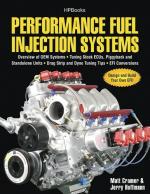|
This section contains 622 words (approx. 3 pages at 300 words per page) |

|
American automobiles with carburetors were produced for the last time during the 1986 model year and were replaced by designs equipped with electronic fuel injection (EFI) systems. Clean air standards were the driving force that pushed manufacturers to reduce pollutants by re-engineering fuel delivery methods. Fuel injection, however, is not a new idea. Rudolf Diesel included it in his diesel engine patented in 1892 and 1893. Automotive engineers have analyzed means of maintaining car performance while meeting emissions standards; and sophisticated electronics, materials, and designs have made both performance and improved air quality possible through fuel-injected vehicles. Fuel injection typically improves horsepower, drivability, and fuel economy over carburetor-equipped cars.
All electronic fuel injection systems consist of sensors that feed data to an Electronic Control Unit (ECU). The ECU processes and controls the electrical operations of the engine and can adjust directions sent to the fuel injectors based on operating...
|
This section contains 622 words (approx. 3 pages at 300 words per page) |

|


